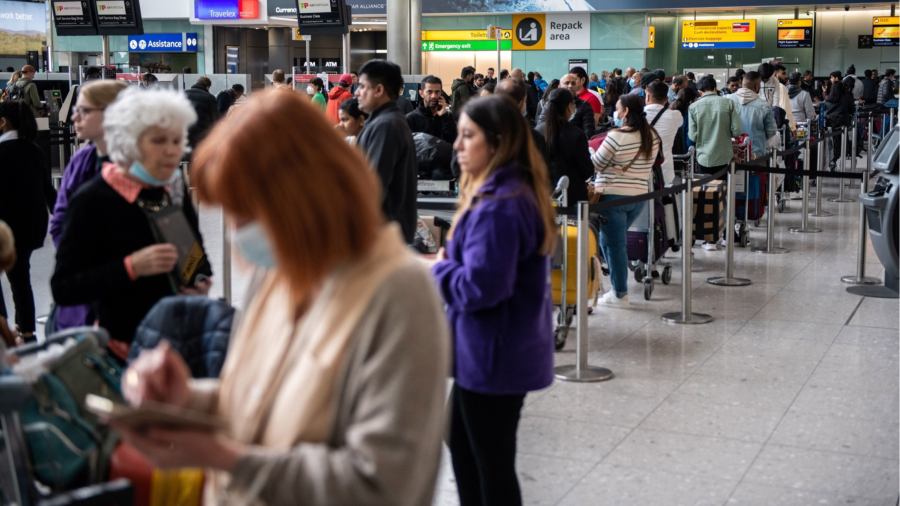
If you have already started thinking about a post-Christmas, Hanukkah or new year holiday, you are not alone. Close to one in five travellers is already looking at booking breaks more than three months ahead, according to travel search engine, Skyscanner.
No matter where you live, though, it will cost you. Air fares are soaring from New Zealand and Brazil, to Europe and India. US inflation data published last week showed average airfares there had risen by 43 per cent over the past year. Of course, large parts of the world were still in Covid lockdown last year and a desperate airline industry might even have been prepared to give away seats if they could. So perhaps a 43 per cent rise is not that surprising.
But it is significant that average fares in the US for September have not been this high since 2014.
And yet, people are still flying. In recent weeks airlines such as Delta and United, Ryanair, easyJet and IAG, have all testified to the strength of people’s appetite for travel, now and for the next few months.
“Demand has not come close to being quenched,” said Delta’s chief executive Ed Bastian last week as he upgraded profit expectations for the fourth quarter.
Airlines argue high fares reflect the higher costs of operation after a surge in fuel prices, the rise of the dollar and higher wage settlements with pilots, crew and other staff. The staff shortages in particular have encouraged most of the legacy airlines to take a cautious approach to rebuilding capacity. Anyone who remembers the chaos of last summer will understand their wariness to schedule flights that may not get off the ground.
But there may also be a temptation to keep a cap on capacity to cash in after two years of pandemic losses. Just look at the bumper quarterly profits being announced by the likes of IAG, Lufthansa and others, who freely admit that higher fares are a factor.
Even the industry’s arch fare cutter, Michael O’Leary, chief executive of Ryanair, has said ticket prices will have to go up for several more years — and faster than even he had expected just a few months ago.
But at some stage passenger patience with record ticket prices will surely run out. Historical data from Ascend by Cirium, the aviation analytics company, suggests there is “an inverse link between demand and fare change”, according to Cirium executive Rob Morris. The relationship was most clear in the last expansion cycle, he says, when fast growing low cost carriers were able to significantly reduce the cost of travel and stimulate demand above the long term growth trajectory.
This time round the trend is moving in the opposite direction — limited capacity is keeping airfares high and the question is whether or when that impacts demand. While demand is better than the industry had expected at this stage after the pandemic years, it is still fragile and not yet exceptional compared to pre-covid patterns.
According to data from ForwardKeys, the travel data provider, tickets issued for flights in Europe in the fourth quarter had recovered to 76 per cent of 2019 levels in the week to October 12, while airline capacity was running higher at 88 per cent. And in the US, where demand seems more buoyant, there were still fewer passengers passing through airport security in October than in 2019.
Nevertheless, there are indications that passenger behaviour is normalising. Fewer travellers are leaving bookings to the last minute, say both Skyscanner and Forwardkeys. But if passenger behaviour is returning to normal then tolerance of high fares could be expected to wear thin as people increasingly feel the effects of surging inflation and a darkening global economy.
It is absolutely normal for travellers to want to see family and friends over the festive period after a two-year absence. They may even shrug off the financial cost for the sake of spending time with loved ones again. But once the season is over the economic clouds will be that much darker. It is difficult to see what the pull will be to splash out on costly air fares when there is a whopping heating bill or mortgage to pay.
Airlines may be thrilled with a better than expected autumn and the bounty that comes with it. But it would be premature to declare a definitive victory over aviation’s bout of Covid until passengers start making their travel decisions in the depths of what promises to be a long, hard winter.